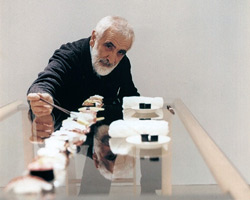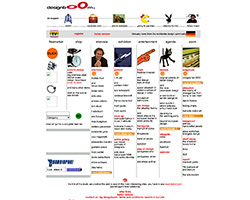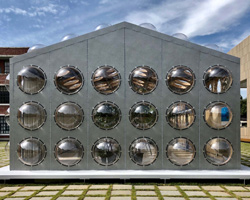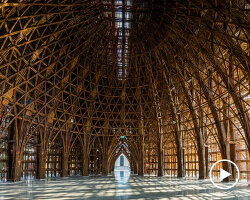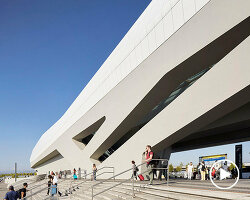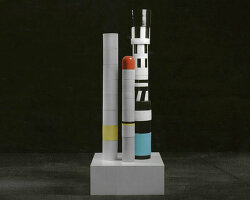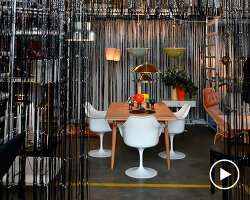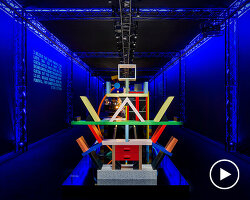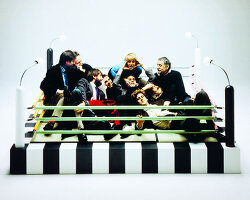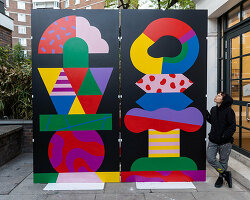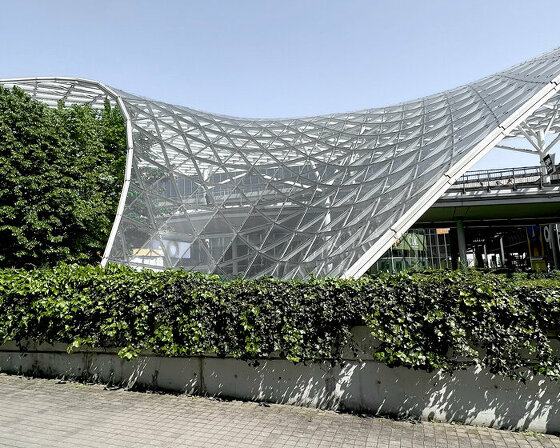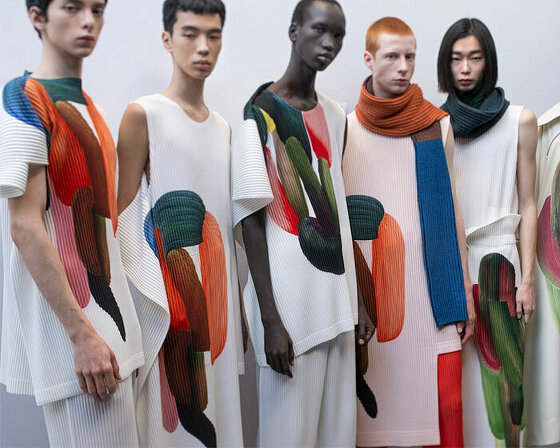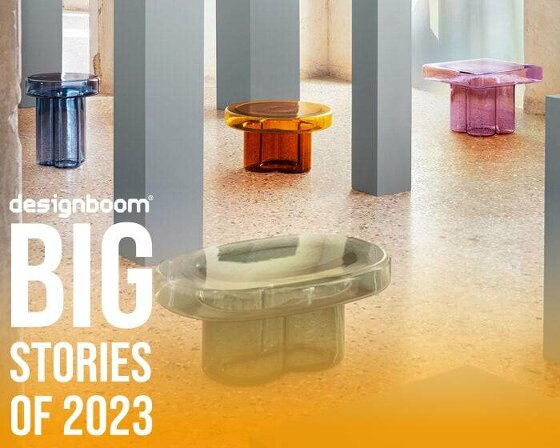20 years of designboom: ettore sottsass (1917 – 2007) — the legendary, late italian architect, designer, and founder of the memphis group (1981), participated in all radical movements of his time — and realized a monumental body of work over a career spanning more than six decades. sottsass developed a vision of design as an instrument for social criticism and his project approach has radically changed the scenario of italian and world design. his objects of the most varied of forms (furniture, lighting, typewriters, glass objects, ceramics, colours and materials,…) created new aesthetic canons which aimed at moving beyond the idea that decoration is a crime.
from his experiments as the artistic director of poltronova in the 1950s, to the lexicon of ideas realized for office equipment manufacturer olivetti in the 1960s, to the founding of the memphis group in the 1980s, sottsass enduringly designed ‘things for life states’, as he described them, ‘the scene for domestic drama or comedy has always been the same (as in greek theatre), the scene can now change easily according to each transformation of situation. this possibility of changing the scene could modify or allow to modify even the very material of the drama or comedy or domestic ritual.‘
ettore sottsass, 1971
non-compliant with the rigidity of modernity, sottsass imbued his designs and objects with expression, humor and humanity. ‘memphis’ was a sort of exercise in design, so was ‘olivetti’, sottsass told designboom in an interview in 2000. ‘they asked me to set up the design of the electronics division. at that time, electronics meant big closets. it was impossible to understand. besides the functionality — which I am still interested in — there was this mystery around electronics. I wanted to show that electronics were mysterious. that is the relationship between design and functionality — a more extensive functionality; a description of a certain conception of existence. this relationship has been, and still is, central in my work.
in our video footage from 2000, sottsass tells the audience about his reluctance to accept contemporaneity, and the ‘culture of competition’. ‘I find it very difficult to talk about contemporaneity,’ he said. ‘the fate of contemporaneity does not stop anyone, but I cannot — with the tiny cells of my brain — adhere completely. I have a vision of it that is not as happy, optimistic, or as hopeful as the industry and tech propaganda want to assert it as being. I have a basic intention, which is to preach calmness. one of the things that scares me the most is this culture of competition. we talk about success, selling, not selling… life is an act of competition. I wonder where this begins and where it ends…’
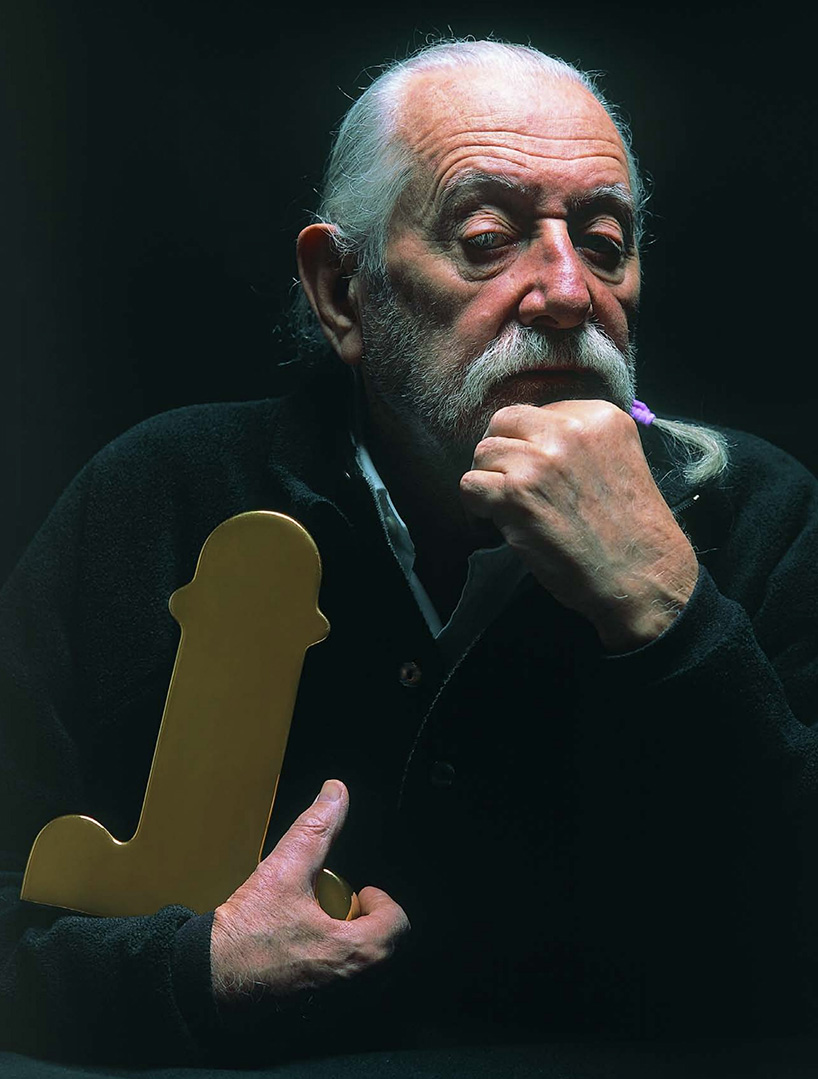
ettore sottsass and shiva vase, 2005
image courtesy B.D. ediciones de diseño
‘can we preach a culture where relationships are always carefully studied and — if anything — dulled, rather than accelerated and sharpened?
in contemporary industry, there is a large distribution of competitive culture… through advertising. for example, the impact of multinational corporations are the result of competitive aggression against underdeveloped countries. we’re making agreements to rip them off. these aspects of contemporary culture don’t calm people, but make them nervous. there is a great state of general neurosis. and a designer, at this point, what can he do? increase these general neuroses, or try to create objects that calm people.
I hate the word ‘creativity’, because it is a word invented on madison avenue by advertisers. it’s clear that the industry needs to renew itself continuously, because otherwise it does not sell. people get bored, generations change and you have to change everything.
but this is about industry, it’s not about society. industry needs advertising, and advertising needs creativity because the market needs to renew itself continuously. it’s a game; it’s a destiny. since there has been industry, it has gradually been subjected to its own destiny — which is what it is.
I don’t think that leonardo considered himself a creative person, and I don’t even think he considered himself an artist. he considered himself a technician who was capable of doing these things — capable of making a horse so powerful to please his lord, or the warrior placed on it, and to express this situation.
I believe that all antiquity was made more by craftsmen than of artists. much less talk about creativity or foolishness or surprises. it may be that contemporary society, precisely because of these mechanisms of accelerated communication, is accelerating on all sides towards a consumption of existence that is conditioned by the necessity of industry, and may continually need spectacle, and therefore creativity.
everything must be spectacular. fashion is always new. cars are always new, even medicines are always new. the way of walking is always new. the ways of going on vacation. the ways to know the world — everything is accelerated and always new.
it may well be that a humanity will be born for which life, existence, is permanently a spectacle. I do not know this, and I don’t criticise it either. I know that creativity — that is, invention — is strictly conditioned from market needs. and the needs of the market are strictly conditioned by the production itself. it’s a closed circle. so, I would like to end here. I’ve thrown a stone in the pond, let’s see what happens.’
ettore sottsass, 2000
—
as we celebrate this landmark anniversary marking 20 years of designboom, we present to you: treasures on tape, from the designboom archives — a series of ‘retro’ videos filmed by designboom in its first years. with japanese mini-dvd technique we conducted video interviews and filmed live discussions with the world’s leading protagonists in the creative fields, where they reflect on the state of contemporary society, the evolution of their work over the years, and their forecast for the future.
watch the video at the top of the page, and stay tuned as we deliver you a host of treasures on tape: from the designboom archives.

for twenty years designboom has united and promoted creatives from around the world, excited by the ideas of small practices, independent makers, enthusiastic students, and the biggest names in business. driven by curiosity, passion, research, expertise and hard work, designboom embraces a broad definition of art, architecture, technology, publishing the latest and most relevant projects in these fields to a global audience of 3.5 million readers. online since 1999, designboom is the first and most popular digital architecture, art and technology magazine (english and mandarin), with offices in milan, new york, beijing, and tokyo.
readers are an active and essential part of our editorial calendar, through designboom’s reader submissions, creatives and makers — regardless of place, position or prestige; religion, nationality, or gender — are invited to communicate their work to a huge, international audience (180,000 active contributors). this horizontal distribution of information means that cultural conversations are developed directly by our readers, and do not follow any fixed hierarchical systems or chains of command. 490k newsletter subscriptions – see also instagram (2.6 M followers), facebook (1.2M) and twitter (1.2 M).
20 YEARS OF DESIGNBOOM (10)
DBINSTAGRAM (2250)
ETTORE SOTTSASS (21)
MEMPHIS (18)
PRODUCT LIBRARY
a diverse digital database that acts as a valuable guide in gaining insight and information about a product directly from the manufacturer, and serves as a rich reference point in developing a project or scheme.
